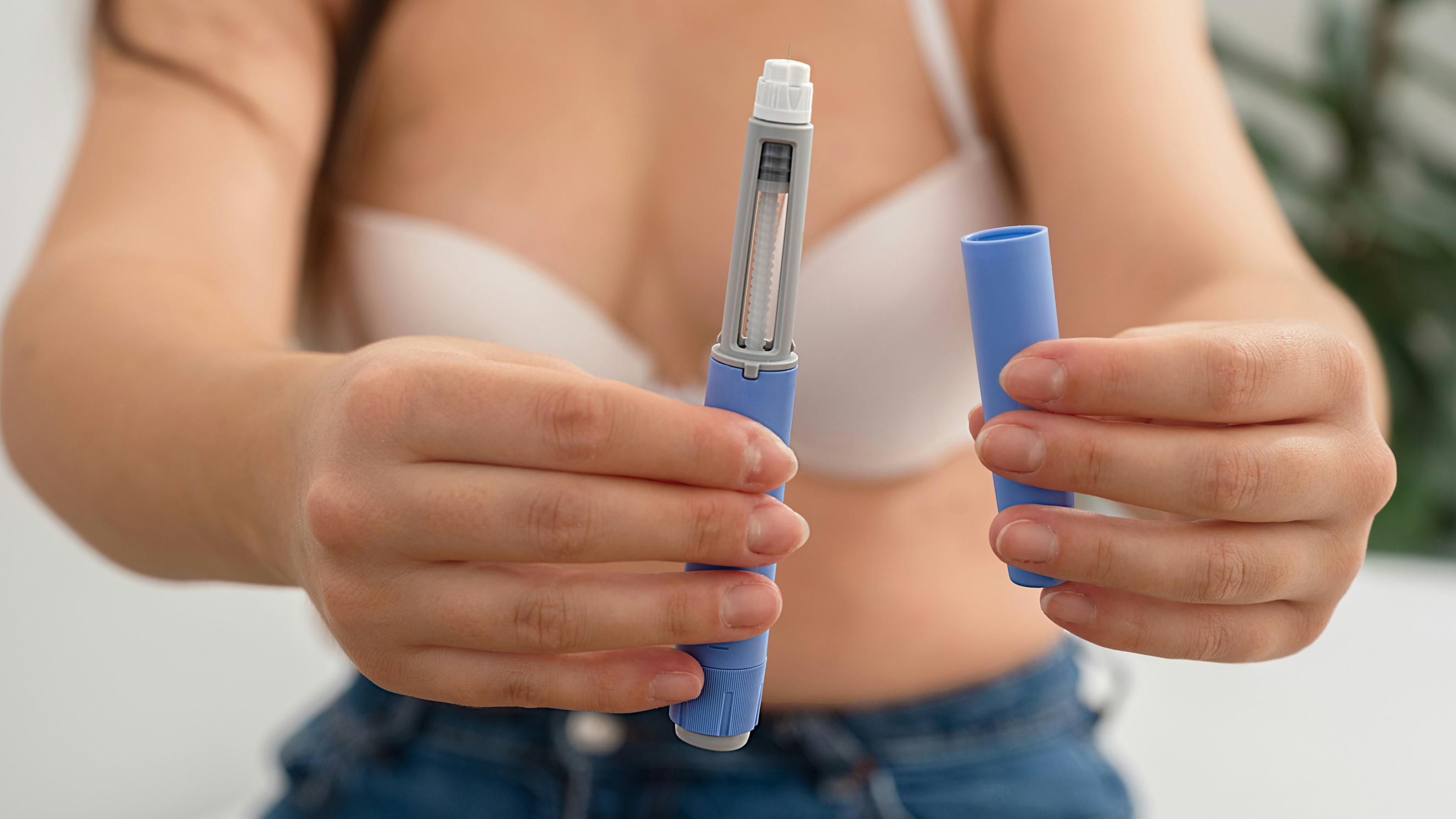Table of Contents


What is orforglipron?
Orforglipron is a diabetes and weight loss medication currently in development by Eli Lilly, their first non-peptide oral GLP-1 receptor agonist — something we’ll explain below. The drug is currently in Phase III, which provides much of the data on safety needed for approval by the U.S. Food and Drug Administration (FDA). Though not yet approved for any condition in the United States, it is still fairly early in development. There have been a number of trials showing promising results, but more is needed to become a marketable, safe and effective drug.
How does it work?
Orforglipron is a GLP-1 receptor agonist, a fancy but surprisingly simple classification. Glucagon-like peptide-1 is a hormone that naturally occurs in the body, both in the gut and the brain, which is responsible for increased production of glucagon. Although secretion of glucagon does a number of things, the most important effect for us is appetite control! By mimicking GLP-1, or “tricking” the body’s receptors into thinking they’re binding with a natural hormone, medications like orforglipron can make people feel more full, among other things.
There are some significant differences in the chemical structure of orforglipron compared to other popular GLP-1 receptor agonists, most of which are too complex to cover here, but there are some key differences to highlight.
Orforglipron is:
- Not a peptide, or a short chain of amino acids (the building blocks of proteins), like most other GLP-1 medications
- Not administered by injection. Orforglipron is an oral medication, taken by mouth
- Not taken weekly. Orforglipron is taken daily, as it gets processed by the body more quickly than some other medications.
- Expected to be cheaper than competing medications, making weight loss more accessible for the average person
What does the research say?
Eli Lilly has initiated phase 3 development programs to further study the efficacy and safety of orforglipron for the treatment of obesity and overweight (ATTAIN trials) and type 2 diabetes (ACHIEVE trials), but a number of studies have already been completed. Both the ATTAIN and ACHIEVE trials are ongoing, but there is some published Phase II data, explored below.
At the 26-week mark, orforglipron (at doses of 12 mg, 24 mg, 36 mg, or 45 mg) demonstrated significant, dose-dependent reductions in body weight, ranging from 8.6% (equivalent to 19.8 lb. or 9.0 kg) to 12.6% (equivalent to 29.3 lb. or 13.3 kg), compared to a 2.0% reduction (4.6 lb. or 2.1 kg) observed with the placebo. These reductions continued at the 36-week mark, with all orforglipron doses showing decreases in body weight ranging from 9.4% (21.6 lb. or 9.8 kg) to 14.7% (34.0 lb. or 15.4 kg), compared to a 2.3% reduction (5.3 lb. or 2.4 kg) seen with the placebo.
The takeaway: “Daily oral orforglipron was associated with weight reduction and related benefits that appeared to be similar to the efficacy outcomes observed with injectable GLP-1 receptor agonists that have already been approved for weight management.”
What are the side effects?
Consistent with other GLP-1 receptor agonists and modern weight loss medications, the most common side effects are digestive in nature. Nausea, constipation, vomiting, diarrhea, and eructation (burping) were the most common adverse events associated with orforglipron, with a significantly higher occurrence compared to the placebo. Specifically, nausea was reported in 37% to 58% of patients across the orforglipron dose groups, whereas it was observed in only 10% of those in the placebo group.
In general, the proportion of participants experiencing adverse events varied from 86% to 90% among the different orforglipron dosage groups, while it stood at 76% in the placebo group. 10 to 17% of participants discontinued use of orforglipron due to side effects, but there was no clinically relevant difference in the presence of serious adverse events between the orforglipron dose cohorts and the placebo group.
Will it get approved? If so, when?
There's never a surefire way to predict if a medication will get the FDA's green light. Eli Lilly has to go through all the hoops of clinical trials, collecting data on how effective and safe orforglipron is, and even looking into those tricky edge cases. Until they've got all that sorted, there's always the chance that new data could shake things up and suggest orforglipron isn't as great as we hoped.
But hey, it's not all doom and gloom! We can still hold onto a bit of hope. Orforglipron has been showing some pretty promising results in trials, even holding its own against big players like semaglutide and tirzepatide.
Final Notes
There's no guarantee that orforglipron will be approved by the FDA, but the results from trials so far look promising. Once all the necessary data has been collected and reviewed, the approval process can begin. It's difficult to predict exactly when this might happen, but there's hope that orforlgipron could become an important option for weight loss in the future.

More Articles Like This











